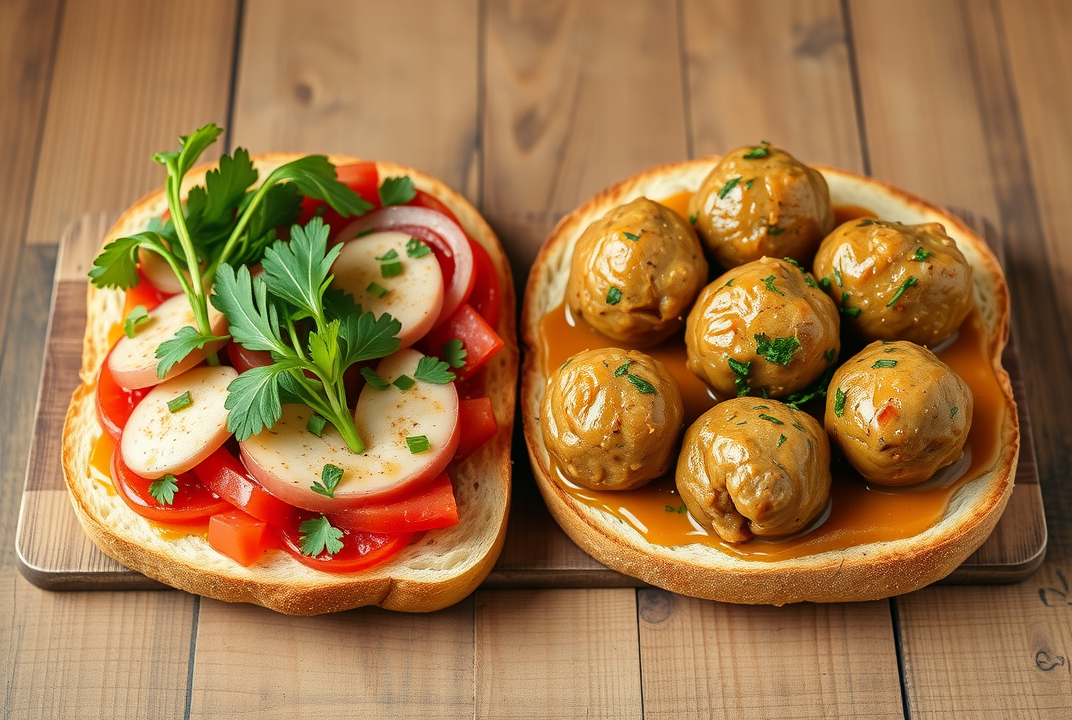Danish and Swedish Cuisine: Exploring the Key Differences

Introduction
Did you know that while Denmark and Sweden share a geographical closeness, their culinary landscapes are distinctly unique? Both known for their rich histories and strong cultural identities, these neighboring countries offer flavors that reflect their traditions and innovations. In this article, we'll explore and compare Danish and Swedish cuisines, diving into their differences in dishes, cooking methods, and cultural influences.
The Foundation of Danish and Swedish Cuisine
Danish and Swedish food both have roots in Scandinavian traditions and access to similar natural resources. However, their culinary foundations differ significantly.
Danish Cuisine: Danish food has a reputation for its hearty meals often involving pork, potatoes, and rye bread. The smørrebrød, an open-faced sandwich, is Denmark’s signature dish. It typically features ingredients like pickled herring, liver pâté, or boiled eggs atop a slice of dark rye bread. Danish food strongly emphasizes preserving traditional flavors, often using pickling and marinating to prolong shelf life and enhance taste.
Swedish Cuisine: Swedish food, on the other hand, prides itself on simplicity combined with elegance. Dishes like meatballs and gravlax are staples. Swedish meatballs, often served with lingonberry sauce, highlight their focus on balancing flavors. Importance is placed on fresh ingredients and modern cooking techniques, with a visible heritage in their traditional celebrations like Midsummer and Christmas.
Influences of Climate and Geography
Climate and geography play crucial roles in shaping Danish and Swedish cuisine. Both countries endure long winters but differ in their approaches to culinary adaptation.
Denmark: The mild climate of Denmark allows for a variety of farm-grown ingredients. Its flat lands make it ideal for growing grains and rearing pork, which are staples in Danish meals. Coastal areas provide seafood that heavily features in their diet, mainly through smoked or cured methods.
Sweden: Sweden, being more expansive and with varied landscapes, produces a range of ingredients. Its northern climate influences the preservation techniques used, such as curing, which is critical in iconic dishes like gravlax. The abundance of forests provides berries and wild game, which are integral to Swedish food traditions.
Cultural Influences and Traditions
Danish and Swedish cuisines are reflections of their cultural histories.
Danish Cultural Influences: Denmark historically emphasizes community dining, where large meals are shared among family, reflective of hygge—a Danish concept relating to comfort and coziness. Culinary traditions like the communal Christmas lunch emphasize hearty meals, with pork roasts and red cabbage being central features.
Swedish Cultural Influences: Swedish food culture is closely tied to its traditions and festivities. Fika, the custom of having coffee with pastries or snacks, is a cornerstone of Swedish life. Seasonal traditions such as kräftskiva, a crayfish party in August, show their national love for seafood and social eating.
Key Ingredients and Signature Dishes
Danish Key Ingredients and Dishes:
-
Rye bread: A daily staple known for its dense texture and rich taste.
-
Pickled herring: Often a key part of celebrations, marinated in various spices.
-
Pork: A versatile ingredient, featured in steaks, sausages, and roasts.
Signature Dishes:
-
Smørrebrød: Elaborate open sandwiches with varied toppings.
-
Frikadeller: Pork meatballs, often served with potatoes and gravy.
Swedish Key Ingredients and Dishes:
-
Potatoes: Serve as a base or side to most meals.
-
Salmon: Frequently smoked or cured, a staple in any festive table.
-
Berries: Specifically lingonberries, used in sauces and jams.
Signature Dishes:
-
Köttbullar: Swedish meatballs, served with creamy sauce and lingonberry jam.
-
Gravlax: Cured salmon served with dill and mustard sauce.
Conclusion
Understanding the differences between Danish and Swedish food offers a clearer view of their distinct cultural identities and tastes. While each keeps its unique preferences, they both enrich the Nordic culinary scene with depth and innovation. Whether you favor the hearty warmth of Danish dishes or the balanced simplicity of Swedish cuisine, there is something for everyone to enjoy. Embrace the taste of Scandinavia by exploring recipes and preparations from both traditions.